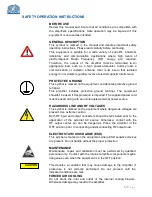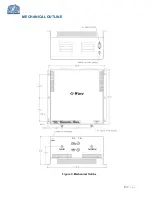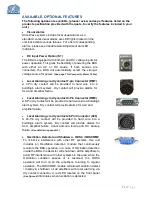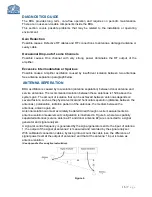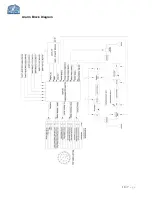
4 |
P a g e
OVERVIEW
The BDA assembly enhances the coverage area of radio communications in buildings and RF
shielded environments.
The BDA has dual RF paths (Down-Link / Up-Link) to improve coverage in two distinct
frequency bands.
The unit features low noise figure and wide dynamic range. It is based on a dual duplexed
path configuration with sharp out of band attenuation allowing improved isolation between the
receiving and transmitting paths.
BDA-PS8NEPS-37/37-90-AB provides up to 37 dBm composite power and has up to 92 db
gain.
FCC NOTE
The product has been tested and found to comply with the Booster requirements per FCC
Part 20.
IC NOTE
The product has been tested and found to comply with the Industry Canada (IC) RF Exposure
Requirements, pursuant to IC RSS-131.
NOTE
The Manufacturer’s rated output power of this equipment is for single carrier operation. For
situations when multiple carrier signals are present, the rating would have to be reduced by
3.5 dB, especially where the output signal is re-radiated and can cause interference to
adjacent band users. This power reduction is to be by means of input power or gain reduction
and not by an attenuator at the output of the device.
RF EXPOSURE WARNING- FCC
The ERP limit, as defined by the FCC is +37 dBm. In order to comply with the FCC RF
exposure requirements, the antenna installation must comply with the following:
The Omni directional antenna (or leaky cable) must be installed so as to provide a
minimum
separation distance of at least 29.9 cm (~11.8 inches) between the antenna connected to the
RF booster and the human user’s body within the area. (This assumes an antenna with gain
of 0 dBi, VSWR ≤ 2:1, Zo= 50 ohms and a cable attenuation less then 1dB).
Should user choose to utilize a higher gain antenna (greater than 0 dBi) with the system,
attenuation of the BDA’s gain will be required to meet FCC ERP limit of +37 dBm.
RF EXPOSURE WARNING- INDUSTRY CANADA
In order to comply with the IC RF exposure requirements, the antenna installation must
comply with the following:
For 0 dBi gain antenna: The antenna must be installed so as to provide a
minimum
separation distance of at least 39.5 cm (~15.6inches) between the antenna connected to the
RF booster and the human user’s body within the area. (VSWR ≤ 2:1, Zo= 50 ohms and a
cable attenuation less then 1dB).
For 10 dBi gain antenna: The antenna must be installed so as to provide a
minimum
separation distance of at least 124.9 cm (~49.2 inches) between the antenna connected to
the RF booster and the human user’s body within the area. (VSWR ≤ 2:1, Zo= 50 ohms an
d a
cable attenuation less then 1dB).



